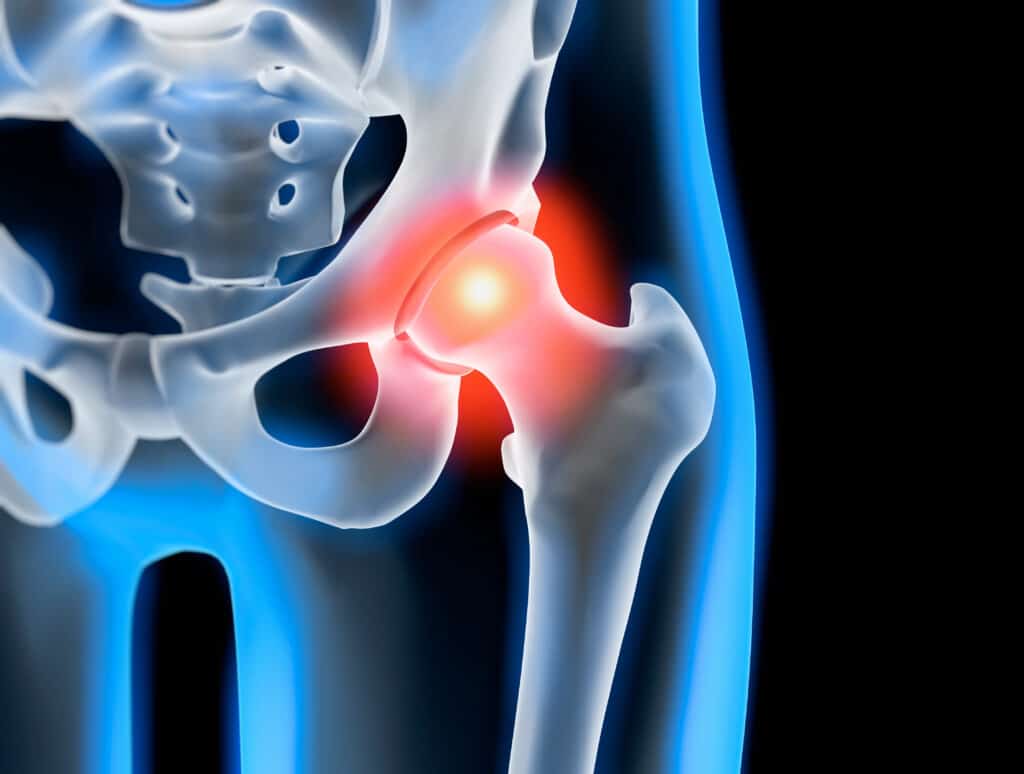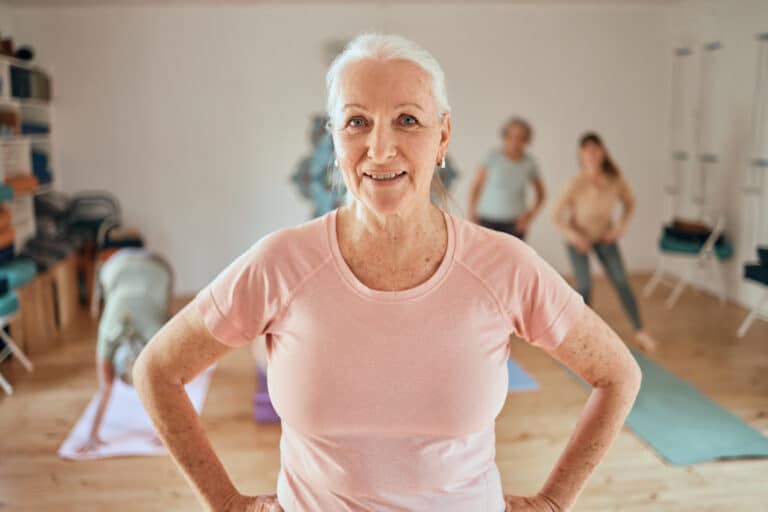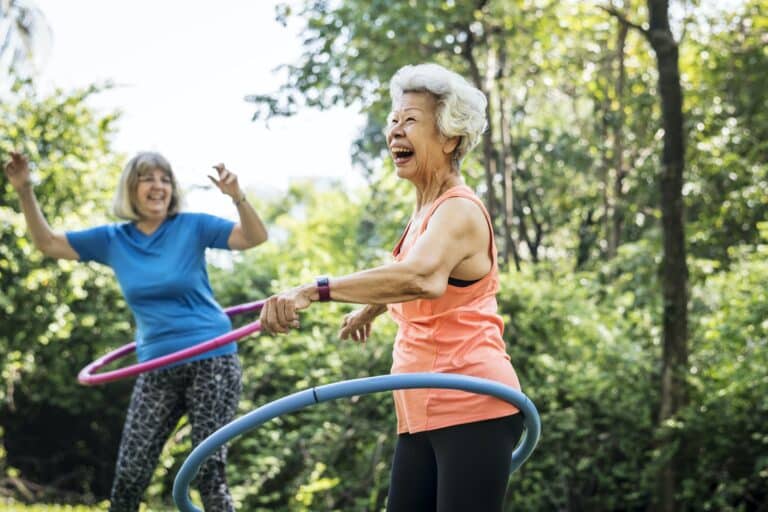Do you ever feel pain or stiffness in your hips when you walk, run, or exercise? Do you have trouble sitting in certain positions, moving your legs in different directions, or performing certain activities? If so, you might have a problem with your hip mobility, specifically your hip rotation.
Table of Contents
- What is hip rotation, and why is it important?
- What are the Common Signs and Symptoms of Hip Rotation Problems?
- Causes and Risk Factors of Hip Rotation Problems
- How to Assess Your Hip Rotation Range of Motion
- Mobility, Muscle Imbalances & Limited Hip Rotation
- How to Improve Your Hip Rotation with Exercises and Stretches
- How to Maintain Your Hip Rotation with Daily Habits and Activities
- Key Takeaways
- FAQs
Hip rotation is the ability to turn your legs inward or outward at the hip joint. It is essential for your mobility, stability, and injury prevention. Lack of proper hip rotation can lead to stiffness, an altered gait pattern, and an increased risk of hip, knee, and lower back pain. Limited hip rotation is often the cause of abnormal hip mechanics and resulting knee dysfunction and injury.
Limited hip rotation impacts a wide range of my patients — from Division 1 athletes to older adults. As a physical therapist, the hips are the first thing I check when patients report back or lower body issues; they are the culprit more often than not.
Below, I’ll share some exercises and stretches I use with my patients to help them improve their hip mobility and well-being. By the end of this article, I want to empower you to understand better how your hips work and what you can do to keep them healthy and functional well into your later years.
What is hip rotation, and why is it important?
Understanding the mechanics of the hip joint can help you understand how it impacts your overall mobility. Hip rotation is the movement of your thigh bone (femur) in relation to your hip joint.
It can be divided into two types: internal and external rotation.
Internal and external hip rotation work together to allow you to move your legs in different directions and perform various activities.
Hip Internal Rotation
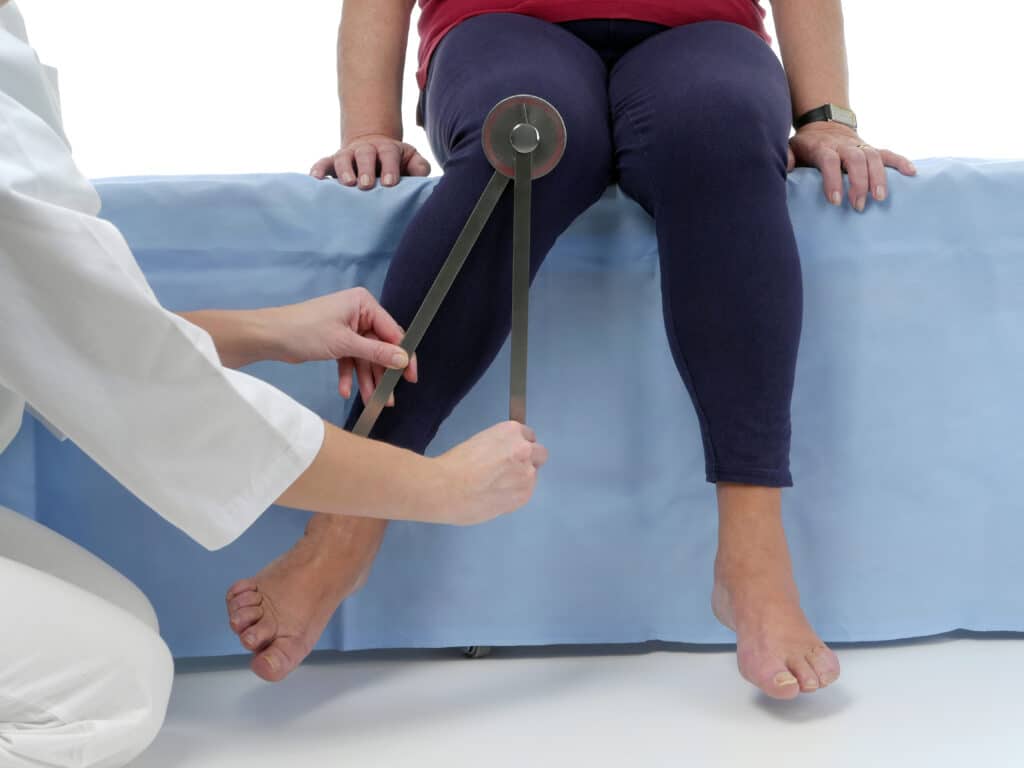
Internal hip rotation is when you turn your thigh inward so that your knee and foot point toward the center of your body. You use this motion to cross your legs, kick a soccer ball, or pivot on one foot.
Hip External Rotation
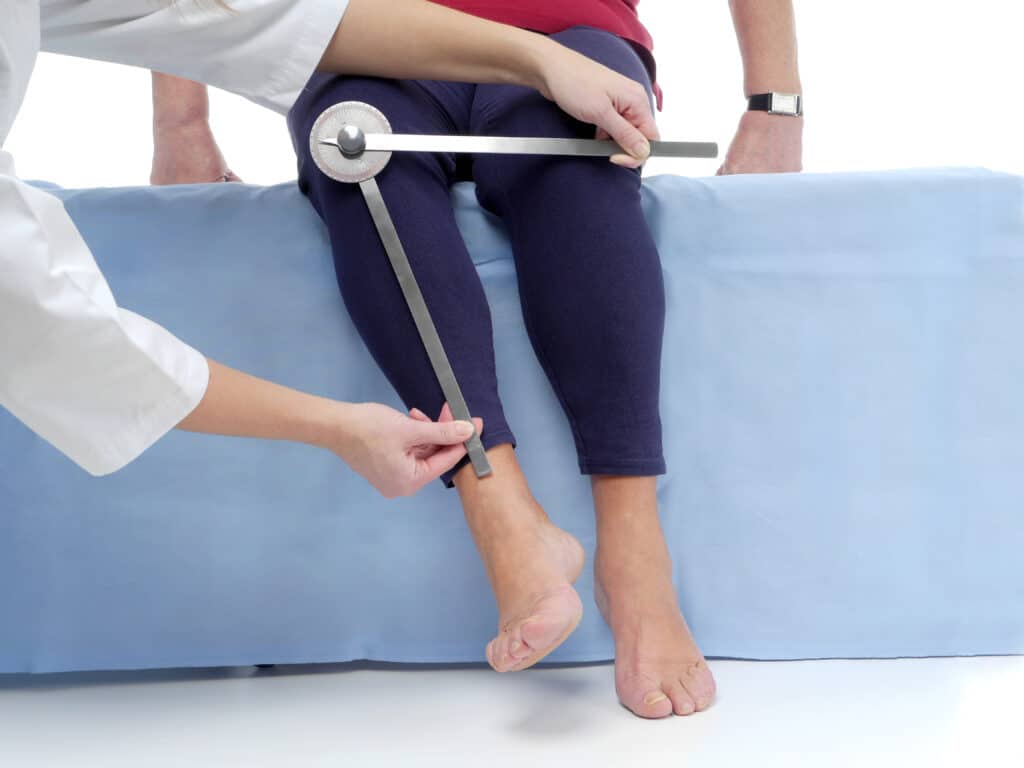
External hip rotation is when you turn your thigh outward so that your knee and foot point away from the center of your body. Actions that include hip external rotation include abrupt changes of direction, getting into a car, and swinging a golf club.
Hip rotation problems are not uncommon, especially among older adults and athletes. Poor hip internal rotation is present in 95% of the athletic population I work with, and it is associated with a higher risk of lower limb injury. One of the most common causes of knee pain in older adults stems from poor hip mobility.
Hip rotation is vital in maintaining mobility, stability, and injury prevention. It can help prevent stiffness, pain, and arthritis in other areas of your body related to the hip, including the knees and ankles.
Hip rotation also distributes forces across your hip joint, reducing stress on ligaments and tendons.
Your hip mobility may also affect your balance, especially the ability to stand on one leg, impacting your agility, coordination, and sports performance.
Finally, increasing your hip rotation can help you avoid excessive twisting or bending of your knee or low back, preventing common injuries such as meniscus tears, ACL tears, or even disc herniation.
What are the Common Signs and Symptoms of Hip Rotation Problems?
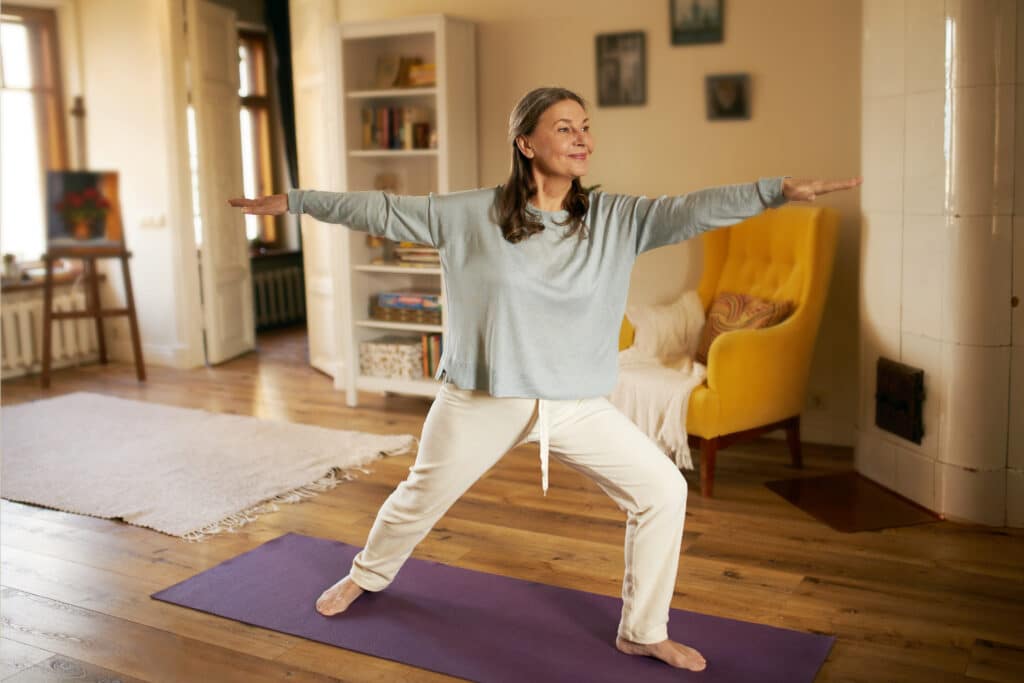
Recognizing the signs and symptoms of hip rotation problems can help you identify if you’re experiencing limitations or issues with your hip mobility. Here are some common indicators to be aware of:
Pain and discomfort
Hip rotation problems may manifest as pain or discomfort in the hip joint, upper thigh, groin, buttocks, or lower back. This may be referred to as hip impingement.
The pain may be from the many muscles in and around the hip joint, the soft tissue structure that makes up the hip joint or areas around the hip experiencing excessive pressure due to movement dysfunction. [1]
Stiffness and reduced mobility
Limited hip rotation can result in stiffness or tightness in the hip joint. My patients often tell me they find getting dressed challenging, especially putting on socks and shoes.
Getting onto and off the floor while gardening or playing with grandkids may also pose difficulty when hip rotation is limited.
Altered gait and movement patterns
Hip rotation issues can significantly impact your walking or running pattern. You may notice changes in how you walk, like limping, favoring one leg, or a noticeable shift in your posture.
You may also begin to take shorter strides. About 10 degrees of hip rotation, specifically internal, is required for ambulating with a symmetric, regular walking pattern.
Muscle imbalances and weakness
Problems with hip rotation can lead to muscle imbalances, with certain muscles becoming overactive or underactive.
These issues can result in the weakness and disuse of inhibited muscles, overuse and pain in other muscles, and compensatory movements in nearby body areas.
Restricted activities and functional limitations
There are limitless daily activities that involve hip rotation. Reduced hip rotation may limit participation in physical activities or sports and impact your ability to stand, twist, reach, and squat.
Simple tasks like getting a dish out of a bottom cabinet, getting in and out of a car, and putting on pants may all become challenging when dealing with poor hip rotation.
Causes and Risk Factors of Hip Rotation Problems
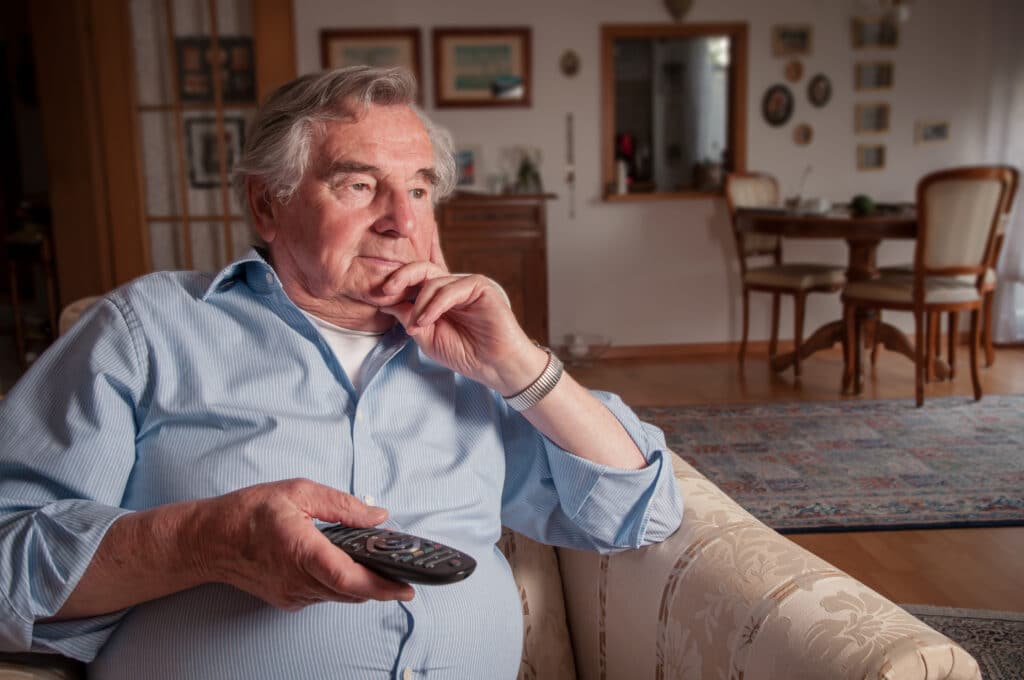
Many things can cause problems with hip rotation, but mainly, I see them result from trauma, overuse injuries, arthritis, or an excessively sedentary lifestyle.
Previous hip injuries, fractures, or surgeries can impact your body’s ability to rotate your hips appropriately. Often, rotation is one of the first degrees of movement to be limited after a hip injury. For this reason, it is also one of the first areas we target in physical therapy when treating a serious injury.
Conditions like hip bursitis, tendinitis, or arthritis can also reduce hip rotation due to pain, swelling, or joint stiffness. When your hip joint is in pain, you are less likely to use your full range of motion, and in turn, your mobility can lessen until you are quite stiff.
A sedentary lifestyle and prolonged periods of sitting can contribute to muscle imbalances and restricted hip rotation. Sitting puts your hip flexors in a shortened position, often weakening all hip muscles.
We also often sit with one leg up, our legs crossed, or in a “pretzel” position — all of these positions emphasize hip external rotation, which can result in problems with limited hip internal rotation.
If you experience persistent or worsening symptoms of hip rotation problems, seeing a physical therapist for a proper evaluation and appropriate treatment can be a lifesaver.
Combining physical therapy and a tailored home exercise program can quickly get you back on track.
How to Assess Your Hip Rotation Range of Motion
Assessing your hip rotation range of motion can help you understand the extent of any limitations or imbalances in your hip mobility. Here are some simple tests you can perform to evaluate your hip’s internal and external rotation:
For each test below, sit on a table or surface with your knees bent and legs dangling. It may help to perform these tests in front of a mirror.
Hip Internal Rotation Test:
- While keeping both hips in equal contact with the surface you are sitting on, swing your right foot out to the side but keep your right knee still.
- Stop when you feel a big stretch in your hip and gauge how far out your foot is from the center.
- Repeat the test on the other side and compare the measurements.
- Watch out for common compensations such as leaning your trunk to the side and lifting your opposite hip off the table.
Hip External Rotation Test:
- Cross one ankle over the opposite knee, allowing the knee to drop downward toward the ground.
- Estimate the range of motion of how close you can get to having your two knees at the same height. You should feel a tightness in the back of your hip when at the end of your external range of motion.
- Repeat the test on the other side and compare the results.
Interpreting the Results:
While it’s ideal to consult a healthcare professional or physical therapist for a comprehensive assessment, some general guidelines are available for interpreting your hip rotation measurements.
It’s common to have slightly different ranges of motion on each side, as mild body asymmetry is frequently not an issue. Significant differences between the left and right hip rotations may warrant further evaluation, especially if you are in pain. (2)
As a general note, you will likely have more external rotation than internal rotation. Though you won’t be able to measure your rotation like a PT, a “guesstimate” will do.
- The average range for hip internal rotation is around 35-45 degrees. That’s less than halfway between resting position and having your shin completely parallel with the floor.
- The average range for external rotation is between 40-60 degrees, a bit closer to parallel than your internal rotation measurement.
If your measurements are significantly far off from this, or you cannot get your ankle up onto your opposite knee during testing, you may have limited hip rotation.
Mobility, Muscle Imbalances & Limited Hip Rotation
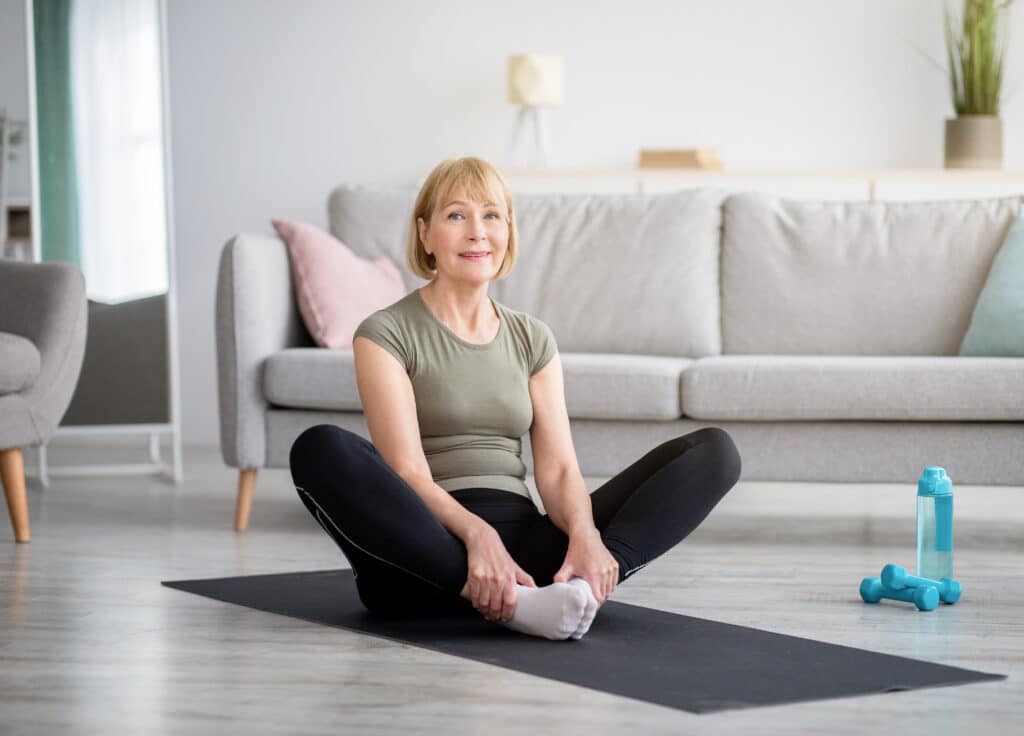
We already discussed the many reasons why your hips might be tight. Let’s review what happens inside the hip to cause this limited rotation.
The hip is a big, complex joint with multiple supporting structures. It has to support your entire body weight, so the ligaments, muscles, tendons, and joint capsules must work together to provide a high level of support and flexibility of movement.
Maintaining this perfect balance with many players on the field can be tricky. When one group is too tight or weak, it causes a cascade of issues.
The Role of Muscle Imbalances
Tight hip muscles, such as the hip flexors, adductors, or external rotators, can restrict rotational movements. Your hip internal rotator muscles are tiny and can easily get overpowered by the bigger external rotators (your glutes).
Because these muscles all work together, typically, when one is tight, it can restrict the overall movement of the hip joint and cause tightness and stiffness in the other directions.
Along with tightness, strength and weakness follow suit. Weakness in the hip muscles, particularly the glutes and deep hip rotators, can significantly impact the range of motion. Weak muscles can’t lift the leg to rotate it or support your body weight while walking or running.
Without taking the time and effort to properly strengthen your hip muscles, rotational movement of the hip may be limited.
Muscular imbalances or structural misalignments can affect the smooth functioning of the hip joint. Often, people are born with different angles of the top of their thigh bone (femur), which can lead to varying leg positions — think knock-kneed or bow-legged.
With these anatomical differences, some people may be more prone to hip problems than others, and some may naturally have more hip rotation than others.
Understanding the underlying causes of limited hip rotation can guide you in selecting appropriate exercises and interventions to improve your hip mobility.
How to Improve Your Hip Rotation with Exercises and Stretches
Incorporating targeted exercises and stretches into your routine can make a huge difference to enhance your hip rotation and regain optimal range of motion.
Let’s explore some effective techniques for improving both hip internal and external rotation (3):
Hip Internal Rotation Exercises and Stretches:
Seated Hip Internal Rotation
- Sit on a chair with your feet flat on the ground.
- Cross one ankle over the opposite knee.
- Gently pull up on the crossed knee toward the opposite shoulder.
- Lean forward slightly to increase the stretch.
- Hold for 30 seconds and repeat on the other side.
Seated Internal Rotation Stretch
- Begin seated at the edge of a chair with your feet slightly wider than shoulder-width apart.
- Slowly shift your weight from side to side, allowing your knees to rotate inward while maintaining proper alignment. Imagine you are trying to touch your inner knee to the calf of the opposite leg.
- Perform 10-12 repetitions on each side.
Sitting knee drops
- Sit down on the floor with your knees bent and legs wider than your hips distance apart. You can support yourself with your hands behind you but maintain a good posture throughout.
- Lower the inside of one knee as far as possible toward the ground without allowing your hip to come up off the floor.
- Alternate sides for about 20 repetitions.
Hip External Rotation Exercises and Stretches:
Clamshells
- Lie on your side with your knees bent and stacked on each other.
- Keeping your feet together, lift the top knee while keeping your pelvis stable.
- Slowly lower it back down. Perform 10-12 repetitions on each side.
Fire Hydrants
- Begin on all fours with your hands directly under your shoulders and knees under your hips.
- Lift one knee out to the side while maintaining a 90-degree bend. Try to avoid bending your arms more than necessary.
- Slowly lower it back down. Complete 10-12 repetitions on each side.
Pigeon Pose
- Start in a high plank position. Bring one knee forward and place it behind your wrist, angling the shin diagonally.
- Extend the other leg straight behind you.
- Slowly lower your upper body toward the floor, feeling the stretch in your glutes and hips. Hold for 30 seconds and switch sides.
- Alternatively, you can sit in a chair and cross one ankle over the opposite knee, leaning forward slightly to enhance the stretch.
Remember, while performing these exercises and stretches, listen to your body and go at your own pace. If you experience any pain or discomfort, reduce the range of motion or stop the exercise altogether. It’s important to maintain proper form throughout each movement.
Aim to incorporate these exercises and stretches into your routine at least three times a week for optimal results. Consistency is critical to gradually improving your hip rotation and reaping the benefits of enhanced mobility and reduced discomfort.
How to Maintain Your Hip Rotation with Daily Habits and Activities
Improving and maintaining healthy hip rotation isn’t limited to targeted exercises and stretches alone. Incorporating certain habits and activities into your daily routine can improve hip joint mobility and overall strength and flexibility (4, 5).
Lifestyle Changes to Support Hip Rotation:
- Avoid Prolonged Sitting: Limit extended periods of sitting by taking frequent breaks and incorporating standing or walking intervals throughout the day. Set reminders to get up and move at least every hour, preferably every 30 minutes.
- Supportive Footwear: Wear shoes with proper arch support and cushioning to promote good posture and alignment. By providing enough support from the bottom of the feet, you can encourage good alignment in the ankles and knees, positively impacting hip rotation.
- Maintain a Healthy Weight: Excess weight can strain your pelvis and hips and affect mobility. Aim for a balanced diet and regular physical activity to manage a healthy weight.
- Warm-Up and Cool-Down: Before engaging in physical activities or exercise, perform a dynamic warm-up routine to activate your muscles. Warm-up exercises can prevent injury by increasing fluid flow to the joint for lubrication and waking up the smaller muscles around the hip joint. After exercise, engage in static stretches during the cool-down phase to maintain flexibility.
Activities that Promote Hip Rotation:
- Walking: Regular brisk walking promotes overall hip mobility and is a low-impact exercise that can be easily incorporated into your daily routine. Working on walking with a typical, symmetrical gait pattern is essential — a physical therapist can help assess this and provide gait training if needed.
- Cycling: Biking is an excellent activity to engage your hip muscles and work on your hip rotation. Whether you prefer outdoor biking or stationary cycling, it can benefit your fitness regimen. Many patients who experience hip pain find cycling one of the best exercises to initiate their recovery.
- Yoga: Yoga poses like Warrior II, Triangle Pose, and Garland Pose involve pushing yourself to end-range hip rotation and can help improve flexibility and strength in the hip muscles. The dynamic movements integrated into a yoga practice can help with single-leg stability, hip joint mobility, and muscle endurance.
- Dance: Consider exploring dance styles that involve hip movements, such as salsa, ballroom dancing, or hip-hop. These activities enhance hip rotation and provide an enjoyable way to stay active.
Listen to Your Body and Seek Professional Help
Remember to listen to your body while engaging in any activities or exercises. Suppose you experience persistent pain or discomfort during hip rotation or notice any changes in your symptoms. In that case, it’s vital to seek professional help.
Remember, you’re not alone. A healthcare provider or physical therapist can assess your condition and provide individualized guidance and specific treatment options.
Key Takeaways
- Hip rotation refers to the movement of the thigh bone in the hip socket. It plays a critical role in mobility, stability, and injury prevention.
- Internal and external hip rotation work harmoniously to facilitate smooth movement and maintain joint health.
- Signs of hip rotation problems include pain, stiffness, reduced mobility, altered gait, and muscle imbalances.
- Assessing your hip rotation range of motion through simple tests can help identify limitations and asymmetries.
- Exercises and stretches targeting hip internal and external rotation can help improve mobility and flexibility.
- Lifestyle habits like avoiding prolonged sitting, wearing supportive footwear, and incorporating activities such as yoga or cycling contribute to maintaining healthy hip mobility.
- It’s essential to listen to your body, seek the help of a physical therapist if necessary, and modify your movements and exercises based on your own needs and identified limitations.
Consistency and gradual progression are key when incorporating new exercises, activities, and lifestyle changes to improve hip rotation. By taking proactive steps and becoming attuned to your body’s needs, you can enhance your hip mobility and enjoy the benefits of smoother movements and reduced discomfort.
FAQs
Can you have too much hip rotation, and if so, what might go wrong?
Yes, you can have too much hip rotation. This can happen naturally or from certain types of training. If you have too much hip rotation, your hip joint might become unstable. This means you could get sprains, strains, or dislocations more easily.
Over time, too much rotation can also cause wear and tear on the hip, making conditions like osteoarthritis more likely.
How do conditions like obesity or diabetes affect hip rotation?
Obesity can make hip rotation harder because extra weight puts more pressure on your hip joint. This can cause less movement and more pain.
Obesity can also worsen conditions like osteoarthritis, limiting hip rotation even more. Diabetes, especially when not managed well, can lead to issues like peripheral neuropathy. This condition can cause weak muscles and might affect how much you can move your hips.
Can you do anything to keep your hip rotation healthy?
Yes, there are things you can do to keep your hip rotation healthy. Staying active and exercising can keep your joints flexible and your muscles strong.
Specific exercises that work your hips, like lunges, squats, and some yoga poses, can provide benefit. Also, keeping a healthy weight and having good posture can stop your hips from getting too much strain.
How does getting older affect hip rotation?
As you age, your muscles might get smaller and weaker, and your joints might not be as flexible. These changes can affect hip rotation. Age-related conditions like osteoarthritis can also limit how much you can rotate your hips.
What are some common misunderstandings about hip rotation?
One misunderstanding is that hip rotation problems just come from aging, and you can do nothing. Indeed, your hips might not be as flexible as you age, but regular exercise and stretching can make a big difference no matter how old you are.
Another misunderstanding is that only athletes or very active people need to worry about hip rotation. Good hip rotation is important for everyday activities and can help keep you mobile and enjoying life.
How long does it usually take to see improvement in hip rotation with physical therapy?
How quickly you see improvement can depend on the person and their hip rotation problem.
Some people might see improvements in a few weeks with regular physical therapy, while others might need a few months. The key is to be consistent and do the exercises and stretches your physical therapist gives you.
References:
- Kuhlman, G. S., & Domb, B. G. (2009). Hip impingement: Identifying and treating a common cause of hip pain. American Family Physician, 80(12), 1429–1434.
- Han, H., Kubo, A., Kurosawa, K., Maruichi, S., & Maruyama, H. (2015). Hip rotation range of motion in sitting and prone positions in healthy Japanese adults. Journal of physical therapy science, 27(2), 441–445. https://doi.org/10.1589/jpts.27.441
- Neumann D. A. (2010). Kinesiology of the hip: a focus on muscular actions. The Journal of orthopaedic and sports physical therapy, 40(2), 82–94. https://doi.org/10.2519/jospt.2010.3025
- Hyodo, K., Masuda, T., Aizawa, J., Jinno, T., & Morita, S. (2017). Hip, knee, and ankle kinematics during activities of daily living: a cross-sectional study. Brazilian journal of physical therapy, 21(3), 159–166. https://doi.org/10.1016/j.bjpt.2017.03.012
- Reiman, M. P., & Matheson, J. W. (2013). Restricted hip mobility: clinical suggestions for self-mobilization and muscle re-education. International journal of sports physical therapy, 8(5), 729–740.

